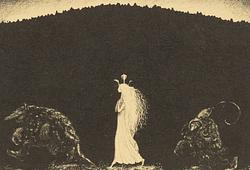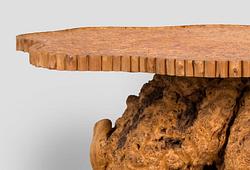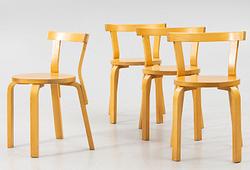A gilt bronze seated figure of Amitayus, Qing dynasty, Qianlong period, dated by inscription.
The crowned figure holding his hands in dhyana mudra and seated dhyanasana on a rectangular plinth draped with a long cloth and a flower head at its center above the inscription Da Qing Qianlong, a separately cast flaming mandorla attached at the back. Height 21 cm.
Wear to gilding. Vase that is supposed to be in its hands is missing.
Alkuperä - Provenienssi
From the Collection of Sven Nilsson (1900-1957) and Margareta (Greta) Nilsson (1902-1999), Grebbestad, Sweden, thence by descent.
This example of the Buddha of Eternal Life and Eternal Light (Ch. Wuliangshoufo) was likely one of the 10,000 commissioned by the Qianlong emperor to celebrate his sixtieth birthday, as well as the birthday of the Empress Dowager.
Näyttelyt
Other examples of the image are known with inscriptions dated to the xinsi (1761) and gengzi (1780) years. For a practically identical image of the deity with inscription to 1770 that retains the vase attribute lacking in this lot, see lot 3166, sold in San Francisco sale 21008, 9 October 2013.
Muut tiedot
Many similar statues of Amitayus were made especially during the Qing dynasty, since it was believed that the merit gained by commissioning multiple images would increase the life of both the donor and to the person they were given.

















































